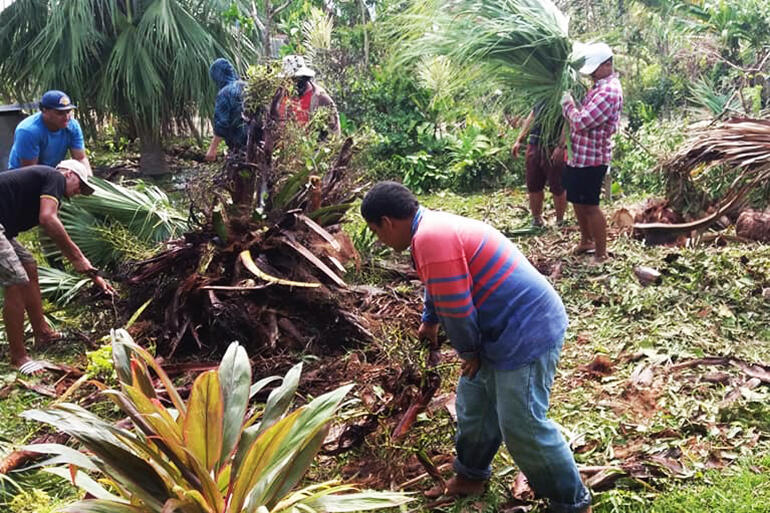
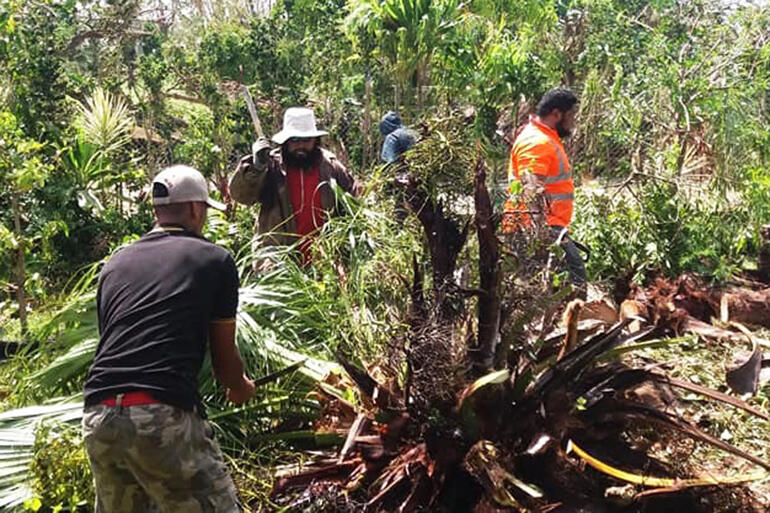
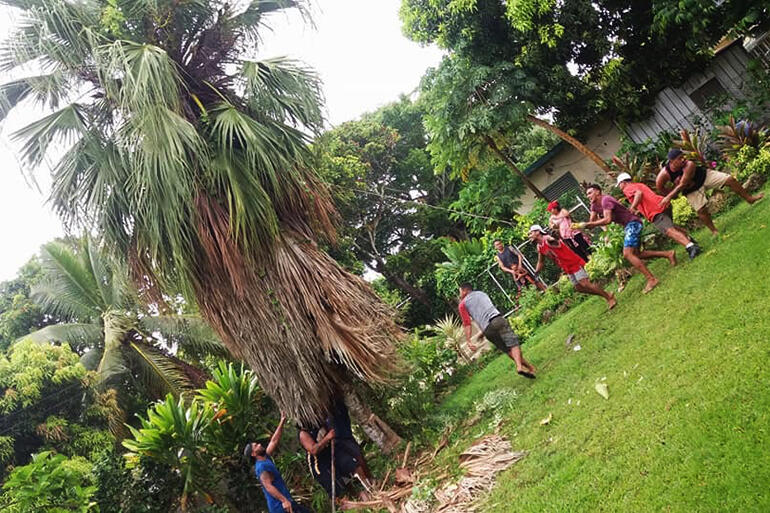
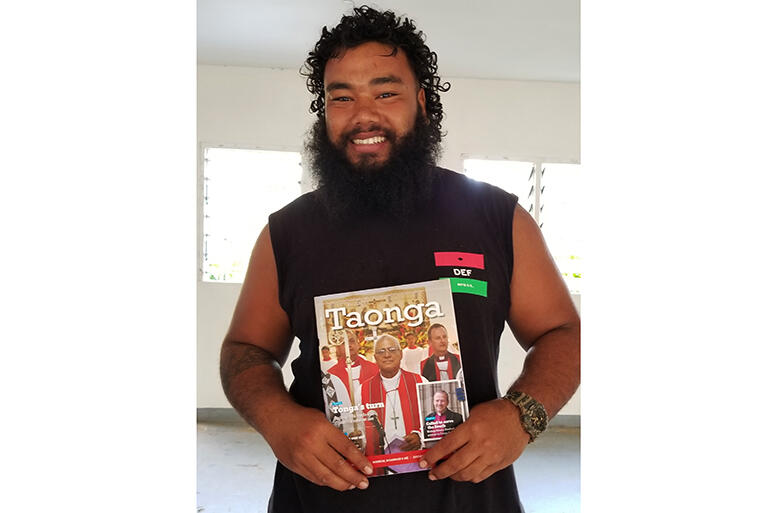

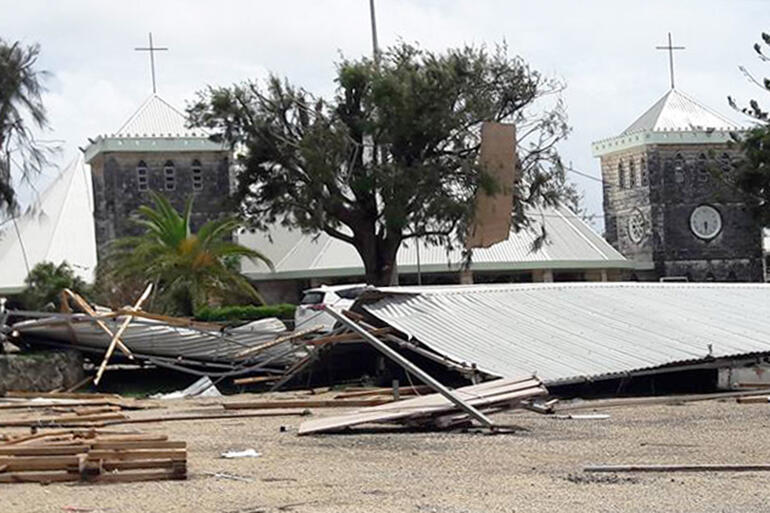
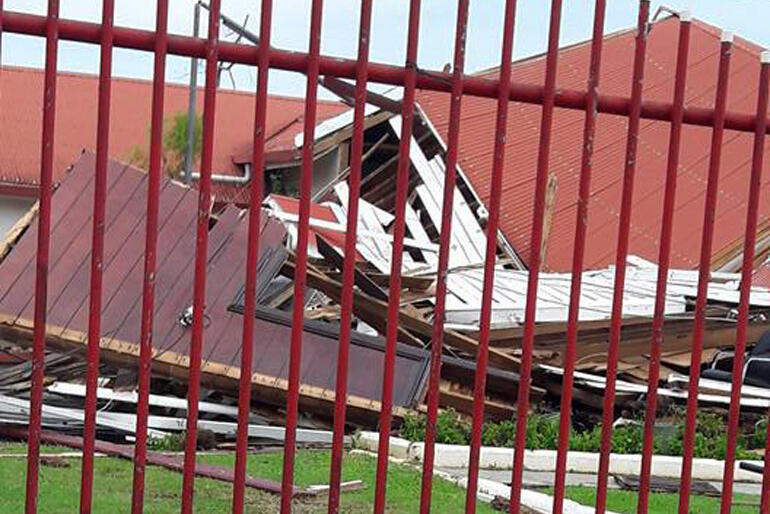
At 6pm last Sunday evening, the young people of All Saints Fasi in Nuku'alofa gathered in church.
But their gathering was no routine Sunday thing.
They hadn't come to sing, pray and worship the Lord.
No: they met instead to fine tune their plans to reach out to those they knew would be most vulnerable to the tempest which was about to strike them.
They knew just who they had to target, and where they needed to head – thanks to training they'd received back in May 2017: training which taught them how to map their community using GIS, or geographic information systems, and how to do "Community Integrated Vulnerability Assessments".
They'd already identified 22 homes in their neighbourhood which they deemed least likely to ride out Cyclone Gita's winds.
Or which sat in the most flood-prone areas.
And they had already identified the homes of the most vulnerable – the widows and the elderly – in their neighbourhood.
So come Monday morning, as the winds were building, about 20 young people from All Saints fanned out to those 22 homes – battening down roofs, lifting furniture… then distributing simple survival kits to ten homes where widows and elderly people lived.
By 3pm on Monday, the young people met back at All Saints to debrief. They'd completed exactly what they had planned to do. They compared notes, before returning to their family homes to hunker down before Cyclone Gita shrieked in on Monday evening.
Gita roared and wrecked its way across Tongatapu all night – they say the winds gusted to 260kmh – before moving out to sea around dawn.
And it wasn't long after that that the young people of All Saints regrouped, and moved into action again.
They headed back out to the homes of the elderly and the widows to check on them, to begin clearing debris from their properties, tidying up, hammering back loose boards and removing broken branches and trees made precarious by the storm.
#
Viliami Folau is a member of All Saints.
He's also a surveyor, an expert in GIS, and he was one of those who gave their time last May to teach 16 young people from across the province how to use GIS, and how to operate the CIVA toolkit.
Today, he's delighted to see what the young people have done with their new learning. And are doing still, with their post-Gita cleaning up.
"Our young people did a very good job before, during and after the cyclone," he says.
Today, Viliami has reflected on the real meaning of those survival kits.
"They weren't lavish. Just a few items – candles, canned fish, matches, biscuits, water – but when the young people handed them to the elderly, you should have seen the smiles on those old people's faces...
"It was knowing that the church cares for them, eh?
"I think that's the most important thing of all. These old people, these widows, see that during the bad times, even cyclones, the church wants to ensure that they're OK."
Viliami thinks the training the young people received last May, and have now put into practice, has opened their eyes.
"In the Pacific, events like Gita are getting more frequent, and more severe. So it's good to see the young people learning about climate change, and becoming truly engaged with disaster preparedness, prevention – and recovery."
There have been lessons, too, says Viliami, for the older people in All Saints.
They've tended to confine their religious duties, he says, to within the four walls of the church building.
But Gita, and the focused efforts of the young people, have opened their eyes, he thinks.
"They see we have a great role to play in helping people during disaster," he says.
"Even before and after."
#
Fei Tevi – consultant to Pacific Island governments, development analyst, former diplomat and Diocese of Polynesia stalwart – is in Tonga right now. He was there when Gita struck.
"It wasn't as furious as Pam," he says. "Gita clocked in at 233kmh. Pam clocked in at 341kmh.
"Even so, we had a number of sustained gusts of 260kmh or 270kmh. So it was bad enough. Within the walking distance of All Saint's we've had three homes blown down, and five families whose houses have sustained major structural damage."
And the point Fei wants to urge on all of us, is that the church – not just the Diocese of Polynesia, but the whole Anglican Church of Aotearoa, New Zealand and Polynesia – needs to see "the medium and long-term picture" where climate change, and the necessity for serious disaster-risk-reduction strategies is concerned.
"I have experienced two category 5 cyclones in three years," he says.
"This is going to become the norm in this region. And as a church, we need to find a way to be responding to the needs of the people in these types of extreme situations.
"And GIS and CIVA training is one of the ways we can do that – and we've done it well here. It's a success."
#
Meanwhile, says Fei, Fasi people are doing their best in the face of the ever-so-slowly receding floodwaters that have inundated their part of Nuku'alofa.
"We will have to contend with flooding for the next couple of days," he thinks.
"And given the fact that we have septic tanks, pollution and contamination are now becoming the next issue."






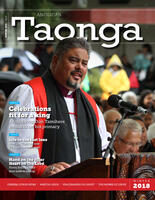










Comments
Log in or create a user account to comment.